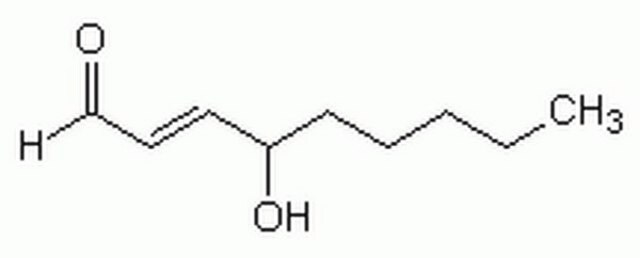Kluczowe dokumenty
494518
Ethyl acetate
biotech. grade, ≥99.8%
Synonim(y):
EtOAc
About This Item
Polecane produkty
klasa czystości
biotech. grade
Poziom jakości
gęstość pary
3 (20 °C, vs air)
ciśnienie pary
73 mmHg ( 20 °C)
Próba
≥99.8%
Formularz
liquid
temp. samozapłonu
801 °F
granice wybuchowości
2.2-11.5 %, 38 °F
zanieczyszczenia
≤0.0009 meq/g Titr. acid
<0.01% water
pozostałość po odparowaniu
<0.0003%
współczynnik refrakcji
n20/D 1.3720 (lit.)
bp
76.5-77.5 °C (lit.)
mp
−84 °C (lit.)
rozpuszczalność
alcohol: soluble(lit.)
water: soluble(lit.)
gęstość
0.902 g/mL at 25 °C (lit.)
λ
H2O reference
absorpcja UV
λ: 254 nm Amax: 1.00
λ: 263 nm Amax: 0.05
λ: 275-400 nm Amax: 0.01
Format
neat
ciąg SMILES
CCOC(C)=O
InChI
1S/C4H8O2/c1-3-6-4(2)5/h3H2,1-2H3
Klucz InChI
XEKOWRVHYACXOJ-UHFFFAOYSA-N
Szukasz podobnych produktów? Odwiedź Przewodnik dotyczący porównywania produktów
Opis ogólny
Zastosowanie
- Preparation of thin films of TiO2 (titanium dioxide) on glass.
- As an extraction medium in the multi-residue analysis of pesticide residues in fruit and vegetables.
- Acetylation of primary amines to form amides in the presence of dimethyltin(IV) acetic acid distannoxane.
Hasło ostrzegawcze
Danger
Zwroty wskazujące rodzaj zagrożenia
Zwroty wskazujące środki ostrożności
Klasyfikacja zagrożeń
Eye Irrit. 2 - Flam. Liq. 2 - STOT SE 3
Organy docelowe
Central nervous system
Zagrożenia dodatkowe
Kod klasy składowania
3 - Flammable liquids
Klasa zagrożenia wodnego (WGK)
WGK 1
Temperatura zapłonu (°F)
24.8 °F - closed cup
Temperatura zapłonu (°C)
-4 °C - closed cup
Wybierz jedną z najnowszych wersji:
Masz już ten produkt?
Dokumenty związane z niedawno zakupionymi produktami zostały zamieszczone w Bibliotece dokumentów.
Klienci oglądali również te produkty
Nasz zespół naukowców ma doświadczenie we wszystkich obszarach badań, w tym w naukach przyrodniczych, materiałoznawstwie, syntezie chemicznej, chromatografii, analityce i wielu innych dziedzinach.
Skontaktuj się z zespołem ds. pomocy technicznej





